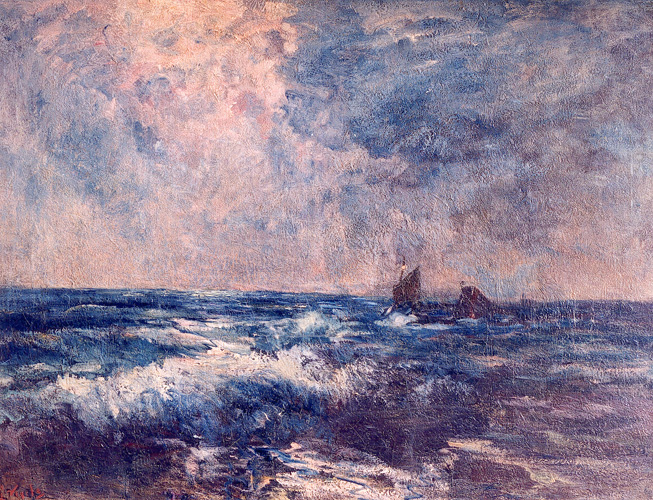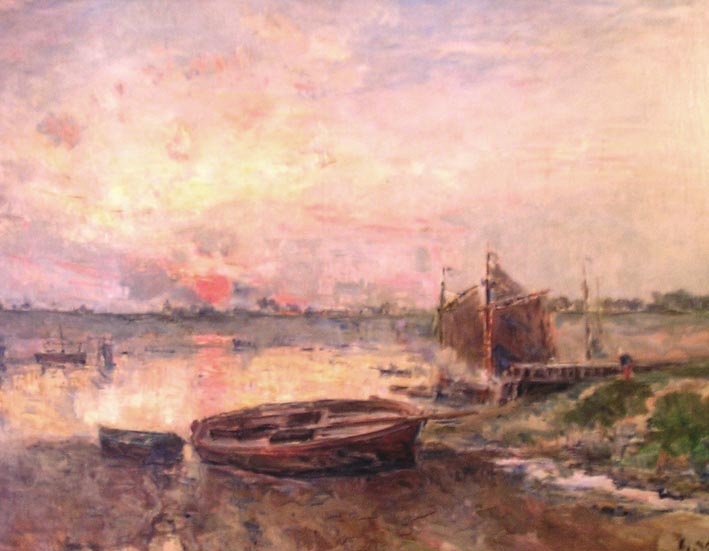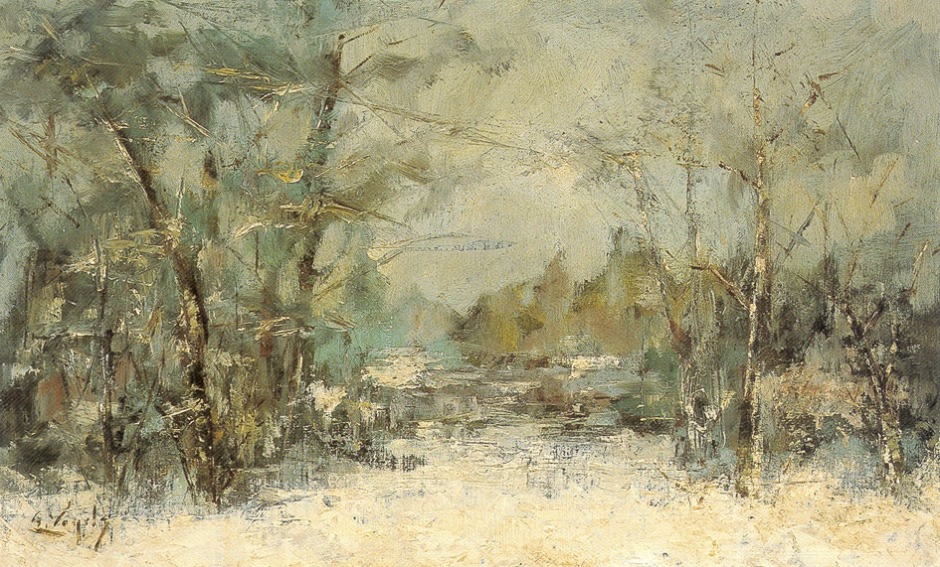Guillaume Vogels (1836-1896)
Born in Brussels in 1836, in 1847 he engaged as a labourer with a local firm. However in 1850 he started studies in drawing at the Academy of Fine Arts in Brussels, which he completed in 1853. He started painting the following year, and had one work accepted for the triennial Salon in Brussels. Otherwise his early paintings appear to have been fairly undistinguished.
His first real milestone was the sale, in 1858, of a painting to the Royal Museums of Fine Arts in Brussels. With this encouragment, he worked in the studio of the Bellis brothers until 1860. In 1865 he toured Germany, visiting Aix-la-Chapelle, Cologne, and Munich. He started to achieve commercial success when he teamed up with a sculptor, Joseph de Bluts, in 1867, offering a full interior decor service. The following year he gained entry to the group of modern Belgian artists in the Fine Arts Society.
In the early 1870s he started working with established Belgian painters, including Hippolyte Boulenger and Périclès Pantazis, who had met with some success when he worked briefly in Paris. Just as Vogels started to get paintings accepted by the Official Fine Arts Salon of Gand (Ghent), Boulenger died.
With further success in the Brussels Salon of 1875, the following year he had a campaign in Ostende with Pantazis. Among the works from that period is his Strand (1876).

In 1879, Vogels made friends with James Ensor (1860-1949), a Belgian painter with British grandparents; that friendship was to last until Vogels’ death, and resulted in considerable mutual influence. Ensor in turn was a major influence on expressionism and surrealism. In 1880, Vogels started to learn print-making and engraving. His paintings achieved further success, including the selection of one to represent Belgian art at the International Salon in Philadelphia.
In 1883, Vogels, Ensor, Pantazis, Goethals, Schlobach, van Rysselberghe, and others founded the Circle of Engravers and Watercolourists, better known as Les XX (there being 20 members at first). Their annual exhibitions became one of the most important art events of the day outside France, with invited representation which included Pissarro, Monet, Seurat, Gauguin, Cézanne, and Vincent van Gogh.
Although many of Vogels’ paintings of this period celebrated the notorious wet and dank weather of Belgium, with dominant greys, direct contact with those members of the Impressionist movement started to bring more light into some of his works.


Pantazis died in 1884, but Vogels travelled to the north coastal areas popular with the Impressionists, including Dieppe, Fécamp, Honfleur and Trouville, where he continued to develop his painting style.
In 1885 he exhibited several paintings in the Salon of Les XX, achieving favourable reviews. He also started a friendship and collaboration with Jan Toorop. The following year was the first in which there was major Impressionist participation in the Salon of Les XX, in which Vogels exhibited no less than 17 paintings. The late 1880s was probably Vogels’ most productive and successful period.

In the early 1890s, Vogels concentrated on motifs on the Belgian coast, particularly around Nieuport and Heyst.

The final Salon of Les XX was held in 1893, after which it continued as La Libre Esthétique, in which Vogels was also an active member. The latter group’s Salon of 1895 included works by Camille and Lucien Pissarro, Signac, Guillaumin, Ensor, Odilon Redon, and Vogels.



On 9 January 1896, Vogels died suddenly. The Brussels Artistic and Literary Circle held a small retrospective exhibition in 1921, but a major retrospective was held in the Palais des Beaux-Arts de Bruxelles in 1936.
Since then, apart from the collections in Belgian museums, his works have only been seen on rare occasions. Sadly many appear to have suffered untimely cracking.
Vogels was remarkable for his fearless portrayal of very difficult subjects, including numerous nocturnes, and plentiful examples of dark, dank days. Whilst the French Impressionists of the day may only have started painting when the sun came out, it was when the sun went in (or down) that Vogels came into his own.
His influence extended far beyond the borders of his native Belgium. Through James Ensor in particular he could justly be claimed as an uncle to Expressionism and Surrealism, perhaps even as far as the unsettling paintings of Paul Delvaux.
The next article in this series will consider the superb, but equally forgotten, paintings of Émil Claus.
References
Ekonomidès C (2010) Vogels, Bibliothèque de l’Image. ISBN 978 2 8144 0012 2. (An excellent and very modestly priced overview of his works, which are illustrated well, in large format. In French.)

